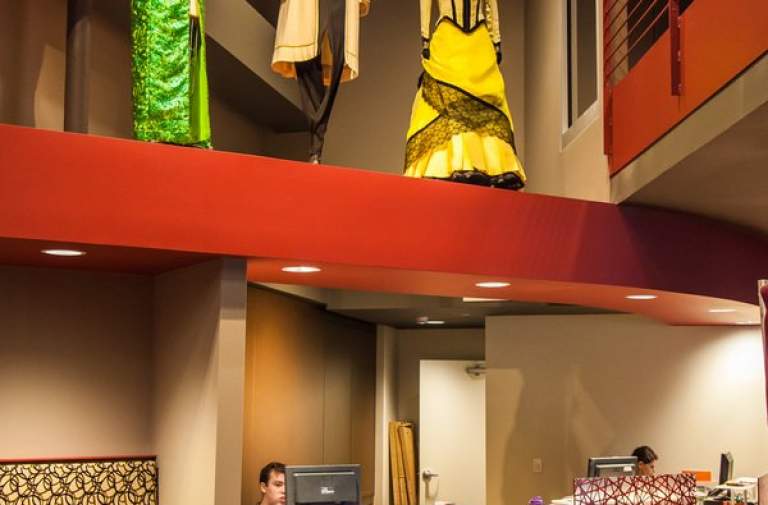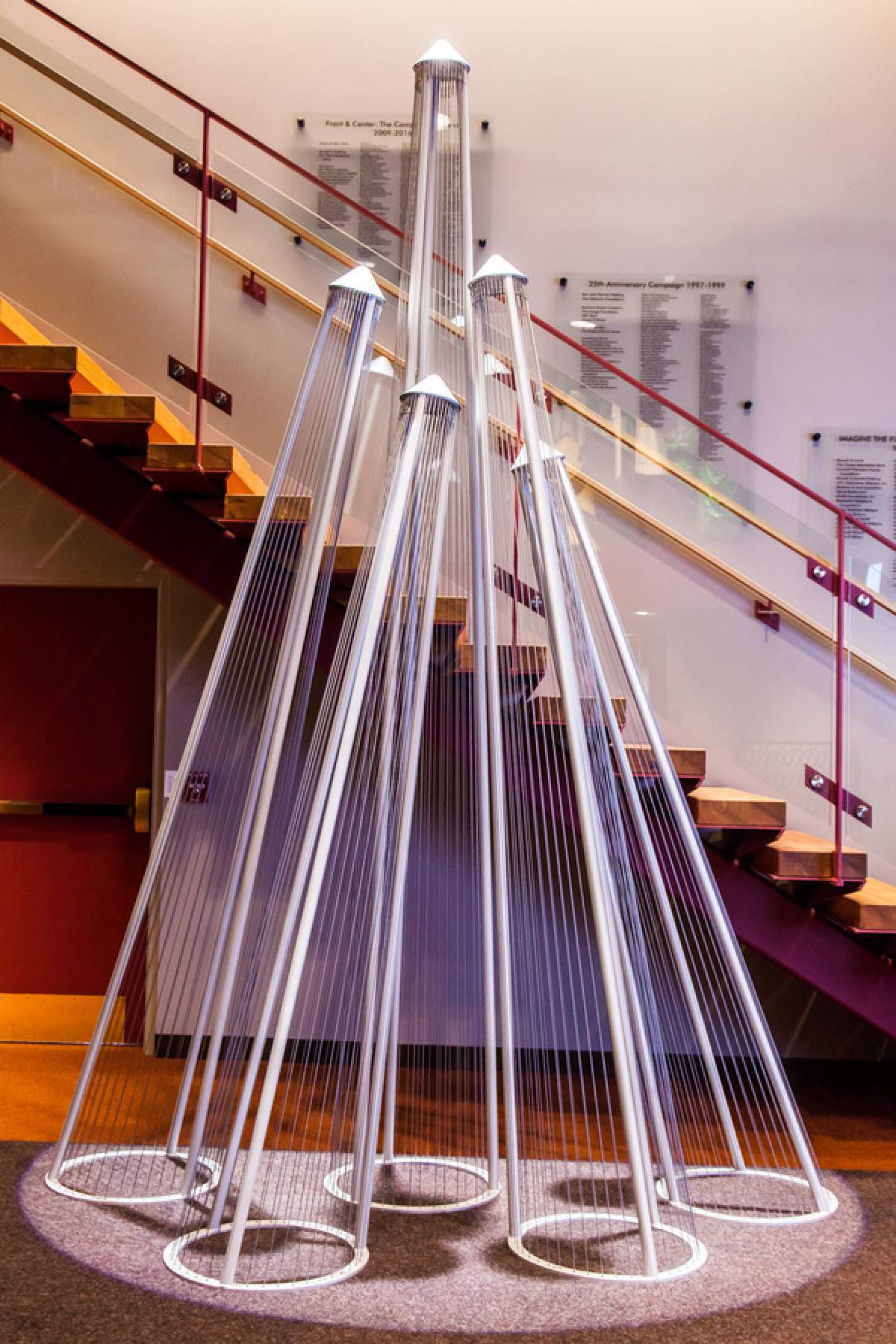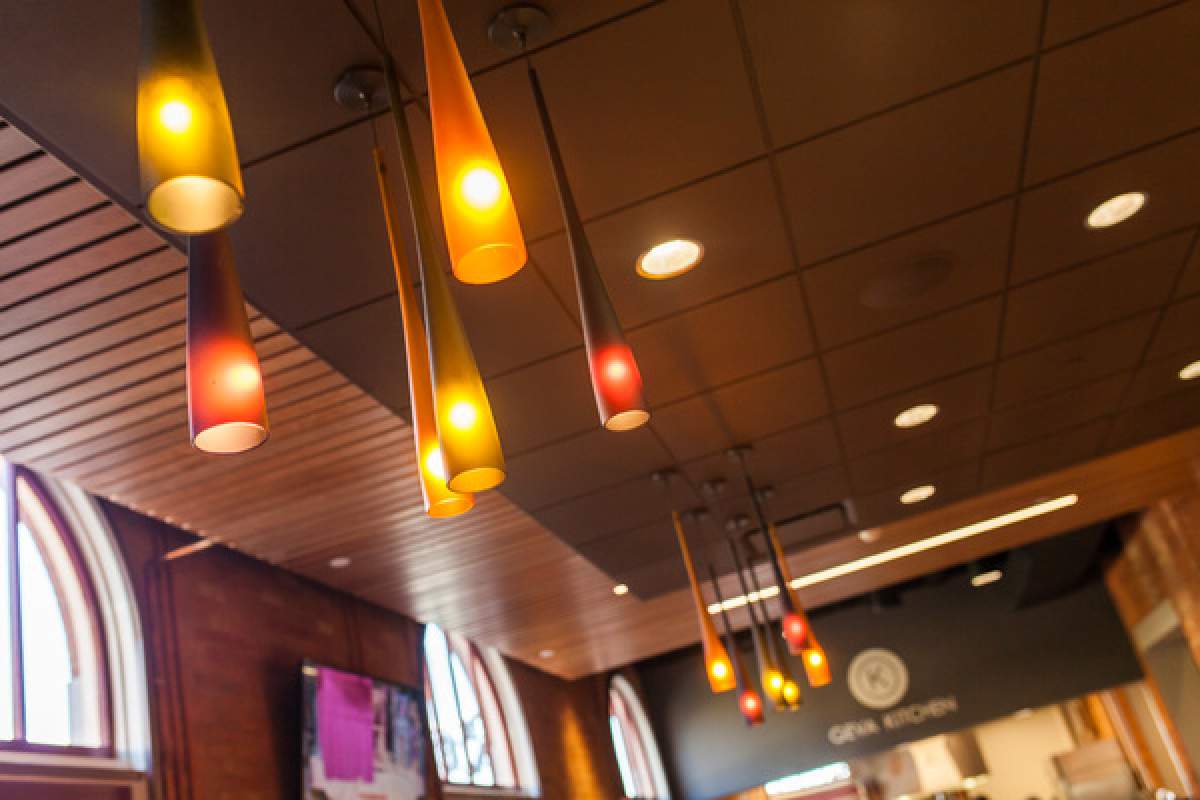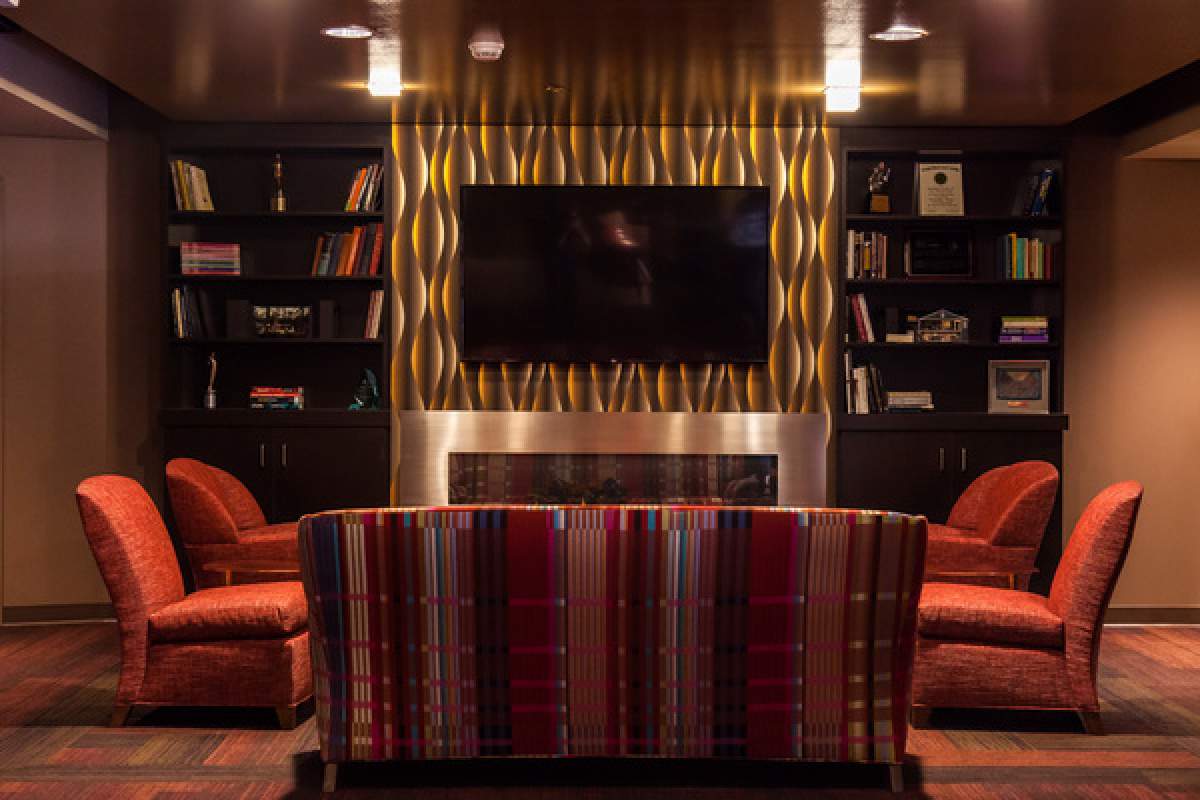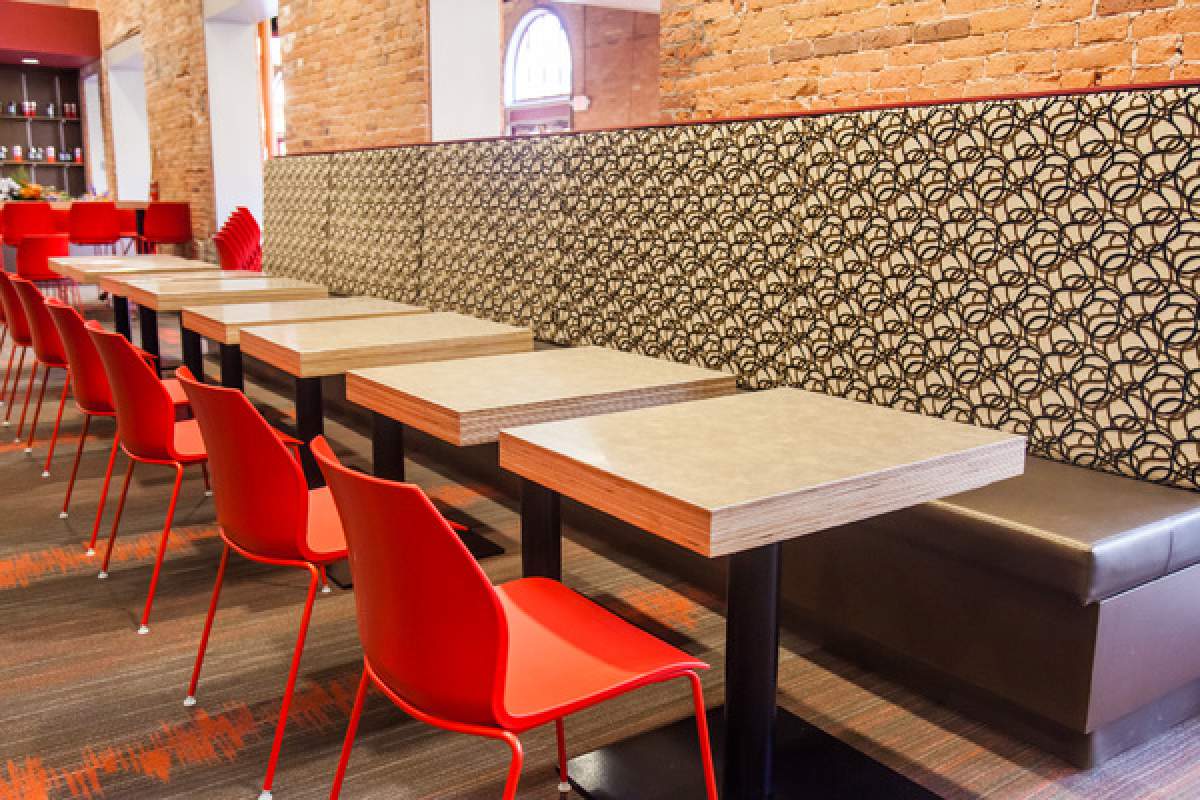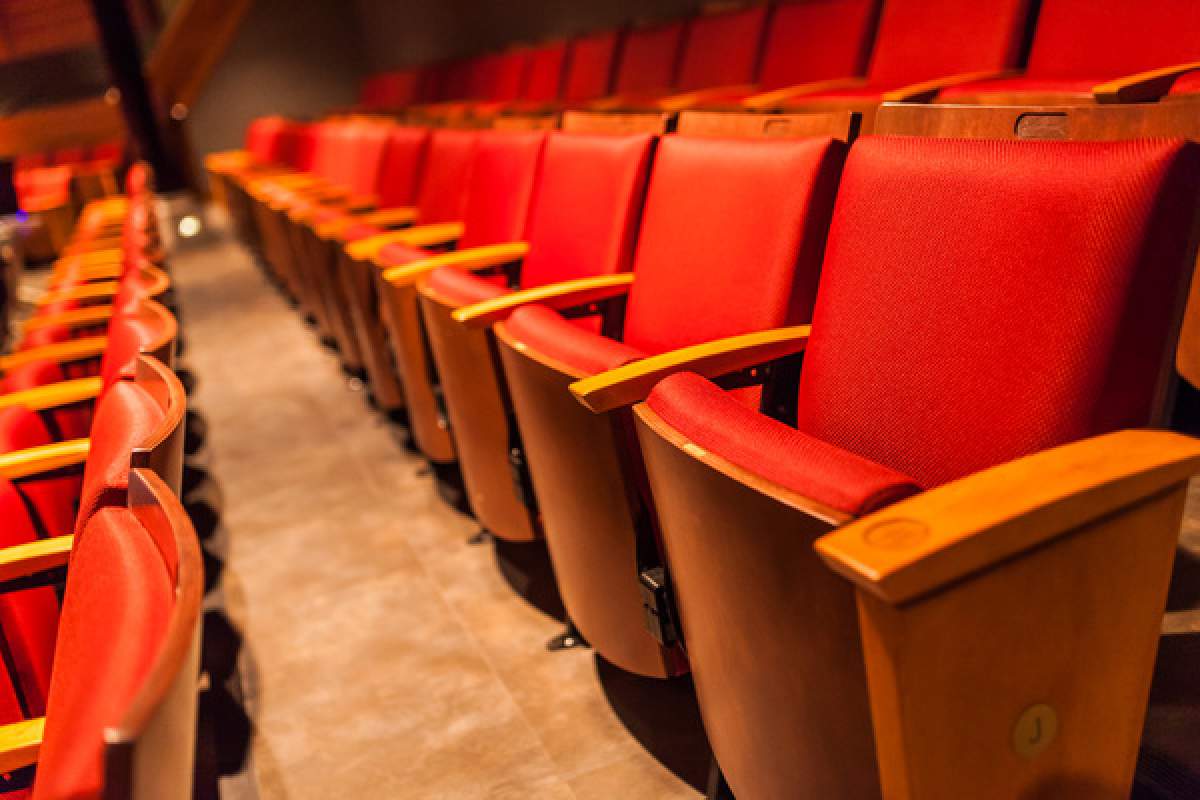October 11, 2016
Photo Flash: Geva Completes Renovation of Its Historic Home
Geva Theatre Center has completed a seven year, multi-phase, top to bottom renovation of its 51,832 square foot home. This renovation has transformed Geva's historic home, the former New York State Arsenal and Rochester Convention Hall, into a dynamic, world-class cultural asset serving people from all over the country, providing exceptional arts and cultural programs and contributing to the economic vibrancy of the region.
Since the official opening of the historic Arsenal building as the Richard Pine Theatre in 1985, Geva has educated and entertained over 4.2 million people, introduced hundreds of thousands of students to Live Theatre, developed tomorrow's plays and artists, and helped transform downtown Rochester. This constant wear and tear, coupled with nearly 30 years of Rochester weather, created significant damage to fabric of this landmark.
A campaign was quietly launched to fund much needed repairs and improvements. In 2009, Geva was awarded $2 million for capital improvement and restoration on the 1868 building through members of Rochester's State Assembly Delegation, secured with help from Assemblyman Joseph Morelle, D-Irondequoit. Subsequent public support under Governor Andrew Cuomo came from Empire State Development (ESD); New York State Canal Corporation; the New York State Office of Parks, Recreation and Historic Preservation (OPRHP); New York State Council on the Arts (NYSCA); New York State Energy Research and Development Authority (NYSERDA); Regional, Economic Development Council (REDC) funded New York Main Street (NYMS) and Empire State Development - I LOVE NY. Ultimately, the State invested 25% of the total capital cost of the renovations.
By 2014, after more than $8 million had been raised toward the $11 million goal, including support from over 160 individual, foundation and corporate donors, the theatre publically announced "Front & Center: The Campaign for Geva" co-chaired by members of Geva's Honorary Board, Ted Boucher and David L. Fiedler since 2009. The Campaign has just reached the $11 million goal, though naming opportunities remain for the new Wilson Stage seats.
Initial renovations commenced in 2009 with improved Box Office and Restrooms, Roof Replacement and Production Equipment Enhancements (2010), followed by Masonry Restoration (2011), Window and Door Restoration/Replacement (2012), Acoustical Enhancements (2013), Accessibility Improvements (2013) and HVAC Replacement (2013 and 2014). Geva worked with local firms SWBR Architects, LaBella Associates and The Pike Company on the delicate exterior restorations.
Upon completing exterior rehabilitation and interior infrastructure work, a two-phase program to transform the artist, staff and audience areas of the building's interior was announced. Phase I included renovations to the second floor rehearsal and conference rooms, administrative offices for over 50 full-time staff, green rooms and dressing rooms, to commence in the summer of 2015. Phase II, the final phase, would commence in the summer of 2016 encompassing renovations of the lobby and café areas, the creation of an entertainment suite, new seats and carpeting in the Wilson Stage and new flooring in the Fielding Stage.
Geva engaged Clark Patterson Lee to complete conceptual and schematic design. Clark Patterson Lee incorporated over 1,500 patron survey responses and held extensive meetings with Geva staff, patron focus groups and the Board of Trustees to develop a conceptual design that will serve the future of the theatre while also being sensitive to the historic nature and integrity of the Andrew J. Warner designed building. Geva issued a Request for Proposals for design-build services in 2014
The renovation has been managed through a process called "design-build." In the typical construction project, the owner of a space hires an architect to plan and create designs; the owner then bids the project out to contractors, selects one, and remains the link between the two. This process can be extremely costly, time consuming and frustrating for the owner. The design-build process, on the other hand, brings planning, design and construction all together, so architects and contractors are in constant communication with owners to make decisions along the way, to address issues as they come up.
For this final phase of the renovation encompassing the lobby and café areas, Geva staff and trustees interviewed several pairs of architects and contractors, who would work together on the renovation of the theatre, and ultimately chose the team of Manning-Squires-Hennig (contractors) and CJS Architecture.
"There were three primary reasons that we selected these two companies," shared artistic director Mark Cuddy. "They both had experience renovating cultural facilities, both had experience with the renovation of historic buildings, and the way that they both spoke about the project mirrored the language that we use in the theatre. We had a shared vocabulary, which is vital in a complicated renovation like this. Communication is key in any project, but especially in a design-build, where everyone's around the table together."
Project superintendent Jeremy Havens from Manning-Squires-Hennig commented, "There are so many times in something like this where you're all working on top of each other," he said, "and that can make it very hard. But everybody has worked well together, and that's made it really fun."
"There were about fourteen subcontractors working on this final phase of the renovation," he continued. "We've been really lucky that all of the subcontractors have been fantastic. Everybody is really good at what they do, and that's made it all work."
The Front & Center campaign also encompassed new housing for visiting artists. As part of its collective bargaining agreements with Actors Equity Association, the Union of Professional Actors and Stage Managers, Geva must provide visiting actors, directors and designers with housing while they are in residence for the nine weeks of rehearsals and performances. As a nationally recognized theatre, artist housing needs to match the caliber of the productions which appear on Geva's stages. Collectively, Geva's visiting artists spend 527 weeks annually in Rochester shopping, eating, visiting area attractions - contributing considerably to the local economy. In January 2015, Geva welcomed the first artists to the Geva Lofts, 11 studio apartments situated only 150 yards from the theatre. In 2016, Geva purchased the building and acquired three additional apartments for a total of 14. Quality housing helps the theatre to attract top quality talent and since the opening of the Geva Lofts, word has quickly spread around the country's theatrical community making Geva and Rochester a top destination for working artists.
The Front & Center Campaign also made provision for a $2 million endowment fund to ensure Geva's future as a leading performing arts facility in the region. Artistic enhancement, education and facility endowment funds will generate interest, dividends and investment income to ensure long-term fiscal health and stability. Comparable regional theatres have an average endowment of approximately $8 million. Geva's endowment fund is overseen by the Board of Trustees and managed by The Rochester Area Community Foundation.
Today, Geva rededicates itself and this historic building, which has been a gathering place for nearly 150 years, to the people of Rochester and pledges to continue to provide opportunities to entertain, inspire, educate, engage and lead for generations to come.
Article published originally on BroadwayWorld.com
